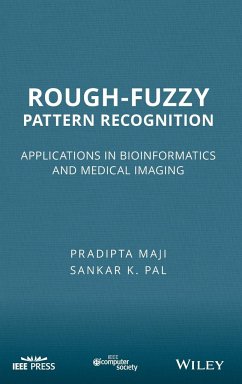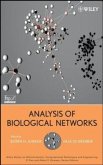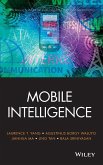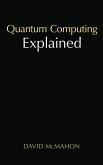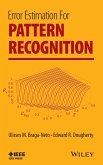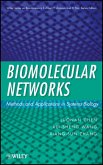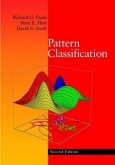This book provides a unified framework describing how rough-fuzzy computing techniques can be formulated and used in building efficient pattern recognition models. Based on the existing as well as new results, the book is structured according to the major phases of a pattern recognition system (e.g., classification, clustering, and feature selection) with a balanced mixture of theory, algorithm and applications. Special emphasis has been given to applications in bioinformatics and medical image processing. The book is useful for graduate students and researchers in computer science, electrical engineering, system science, medical science, and information technology. Researchers and practitioners in industry and R&D laboratories will also benefit.
Learn how to apply rough-fuzzy computing techniques to solve problems in bioinformatics and medical image processing
Emphasizing applications in bioinformatics and medical image processing, this text offers a clear framework that enables readers to take advantage of the latest rough-fuzzy computing techniques to build working pattern recognition models. The authors explain step by step how to integrate rough sets with fuzzy sets in order to best manage the uncertainties in mining large data sets. Chapters are logically organized according to the major phases of pattern recognition systems development, making it easier to master such tasks as classification, clustering, and feature selection.
Rough-Fuzzy Pattern Recognition examines the important underlying theory as well as algorithms and applications, helping readers see the connections between theory and practice. The first chapter provides an introduction to pattern recognition and data mining, including the key challenges of working with high-dimensional, real-life data sets. Next, the authors explore such topics and issues as:
Soft computing in pattern recognition and data mining
A Mathematical framework for generalized rough sets, incorporating the concept of fuzziness in defining the granules as well as the set
Selection of non-redundant and relevant features of real-valued data sets
Selection of the minimum set of basis strings with maximum information for amino acid sequence analysis
Segmentation of brain MR images for visualization of human tissues
Numerous examples and case studies help readers better understand how pattern recognition models are developed and used in practice. This text--covering the latest findings as well as directions for future research--is recommended for both students and practitioners working in systems design, pattern recognition, image analysis, data mining, bioinformatics, soft computing, and computational intelligence.
Learn how to apply rough-fuzzy computing techniques to solve problems in bioinformatics and medical image processing
Emphasizing applications in bioinformatics and medical image processing, this text offers a clear framework that enables readers to take advantage of the latest rough-fuzzy computing techniques to build working pattern recognition models. The authors explain step by step how to integrate rough sets with fuzzy sets in order to best manage the uncertainties in mining large data sets. Chapters are logically organized according to the major phases of pattern recognition systems development, making it easier to master such tasks as classification, clustering, and feature selection.
Rough-Fuzzy Pattern Recognition examines the important underlying theory as well as algorithms and applications, helping readers see the connections between theory and practice. The first chapter provides an introduction to pattern recognition and data mining, including the key challenges of working with high-dimensional, real-life data sets. Next, the authors explore such topics and issues as:
Soft computing in pattern recognition and data mining
A Mathematical framework for generalized rough sets, incorporating the concept of fuzziness in defining the granules as well as the set
Selection of non-redundant and relevant features of real-valued data sets
Selection of the minimum set of basis strings with maximum information for amino acid sequence analysis
Segmentation of brain MR images for visualization of human tissues
Numerous examples and case studies help readers better understand how pattern recognition models are developed and used in practice. This text--covering the latest findings as well as directions for future research--is recommended for both students and practitioners working in systems design, pattern recognition, image analysis, data mining, bioinformatics, soft computing, and computational intelligence.

